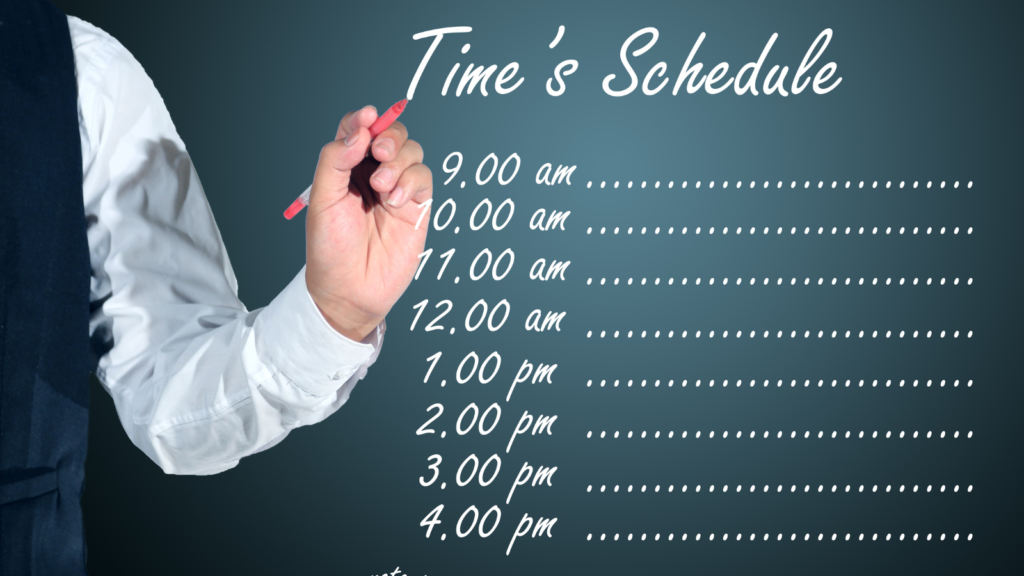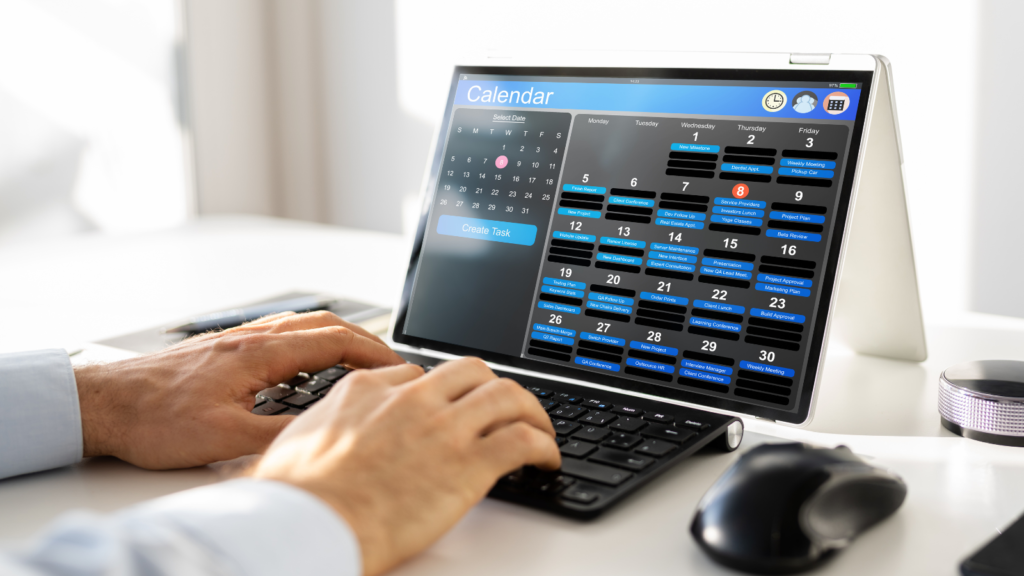Planning your day used to mean staring at a blank calendar, manually blocking time for meetings, tasks, and personal commitments. Now, AI schedule makers are transforming how we organize our lives—turning voice notes, text messages, and scattered to-dos into structured daily timelines in seconds.
But with dozens of AI scheduling tools flooding the market, how do you choose one that actually fits your life? More importantly, how do these tools work, and can they really replace your traditional planner?
This guide breaks down everything you need to know about AI schedule makers—from the technology behind them to practical features that matter for busy professionals, parents, and anyone trying to regain control of their time.
What Is a Schedule Maker AI?
A schedule maker AI is a smart planning tool that uses artificial intelligence to automatically organize your calendar. Instead of manually entering every appointment, task, and reminder, you simply tell the AI what you need to do—through text, voice, or even images—and it creates a structured schedule for you.
Think of it as having a personal assistant who understands natural language. You can say “Gym every morning at 7 AM” or “Project deadline next Friday at 3 PM,” and the AI translates that into calendar events, sets reminders, and integrates everything into your daily timeline.
The best AI schedule makers don’t just add events—they understand context, learn your patterns, and help you build routines that stick. They bridge the gap between chaotic to-do lists and actual time management.
How AI Schedule Makers Actually Work
Natural Language Processing (NLP)
The foundation of any AI schedule maker is Natural Language Processing. This technology allows the app to understand human language in all its messy, conversational glory.
When you type or say “Coffee with mom tomorrow at 4,” the AI doesn’t just see random words. It identifies:
- Action: Coffee meeting
- Person: Mom
- Time: Tomorrow at 4 PM
- Type: Personal/social event
Advanced NLP models can handle complex requests like “Remind me to pay bills on the 15th of every month” or “Block focus time every weekday from 9 to 11 AM.” The AI parses the pattern, frequency, and duration automatically
Machine Learning & Pattern Recognition
The more you use an AI schedule maker, the smarter it gets. Machine learning algorithms analyze your scheduling behavior over time:
- What time do you typically schedule workouts?
- How long do your meetings usually last?
- When do you prefer family time versus focus work?
Based on these patterns, the AI can suggest optimal times for new tasks, predict how long activities will take, and even flag scheduling conflicts before they happen. This is why AI calendars for time management are becoming essential tools for work-life balance.
Voice and Image Recognition
Modern AI schedule makers go beyond text input. Voice recognition lets you add events hands-free—perfect when you’re driving, cooking, or juggling kids. Some tools even support image uploads, so you can snap a photo of a flyer, invitation, or handwritten note, and the AI extracts the scheduling information automatically.
Integration & Automation
The real power of AI scheduling comes from integration. Your AI schedule maker connects with:
- External calendars (Google, Apple, Outlook)
- Communication tools (WhatsApp, Slack, email)
- Task management systems
- Wearables like Apple Watch
This creates a unified view of your entire day. No more switching between apps or missing appointments because they’re scattered across different platforms.
Key Features to Look For in an AI Schedule Maker
Not all AI schedule makers are created equal. Here are the features that separate genuinely useful tools from overhyped gimmicks:
1. Calendar Timeline Integration
Your to-dos should live inside your calendar, not on a separate list. The best AI schedule makers automatically place tasks into your daily timeline, giving you a realistic view of when you’ll actually complete them.
This “calendar-first” approach eliminates the disconnect between planning and execution. When your workout, work meeting, and grocery shopping all appear in the same timeline, you can see exactly how your day flows—and where you’re overcommitting.
2. Smart Reminders That Actually Work
Generic phone notifications are easy to ignore. Look for AI schedule makers that offer contextual reminders through multiple channels:
- WhatsApp reminders for calendar events (24 hours in advance)
- In-app notifications 10 minutes before events
- Wearable alerts for time-sensitive tasks
The key is receiving reminders where you’ll actually see them. Daily reminders matter because they reduce mental load and keep you on track without constant manual checking.
3. Multi-Input Methods
Life doesn’t happen in one format. Your ideal AI schedule maker should accept:
- Voice notes: “Dentist appointment next Tuesday 2 PM”
- Text messages: Quick typed entries
- Bulk entry: Upload or paste multiple events at once
- Image uploads: Extract dates from photos
The more ways you can add information, the less friction there is in actually using the tool.
4. Color-Coded Organization
Visual clarity matters. Color-coded calendars let you instantly distinguish between work meetings, family time, fitness, personal tasks, and social events. This isn’t just aesthetic—it’s functional. When you can see at a glance that your week is 80% work and 5% self-care, you know something needs to change.
5. External Calendar Sync
Your AI schedule maker must integrate seamlessly with existing calendars. If you use Google Calendar for work, Apple Calendar for personal life, and Outlook for client meetings, you need one unified view. No context-switching, no duplicate entries, no missed appointments.
6. Offline Functionality
AI tools that require constant internet connection become useless at the worst moments. Look for schedule makers with robust offline support so you can access your calendar and add events even without connectivity.
7. Habit and Routine Building
The best AI schedule makers don’t just organize one-time events—they help you build lasting habits. Features like recurring tasks, morning routine templates, and habit tracking turn your calendar into a behavior change tool. Research shows that building a daily routine requires structure, and AI can provide that structure automatically.
Which AI Schedule Maker Should You Choose?

The “best” AI schedule maker depends entirely on your specific needs. Here’s how to evaluate your options:
For Busy Professionals
If your life revolves around meetings, deadlines, and project management, prioritize:
- External calendar integration (Google Workspace, Outlook)
- Time-blocking features
- Focus time scheduling
- Meeting conflict detection
Managing time as a busy professional requires tools that understand the complexity of overlapping commitments and help you protect deep work time.
For Parents and Families
Family scheduling needs are unique. Look for:
- Shared calendar access
- WhatsApp reminders (since you’re always on messaging apps)
- Kid activity tracking
- Color-coding for different family members
- Quick voice entry (because your hands are never free)
Family calendar apps need to coordinate multiple people’s schedules while keeping everyone informed without overwhelming them with notifications.
For Students
Student life requires balancing classes, assignments, social events, and self-care. Essential features include:
- Academic schedule templates
- Assignment deadline tracking
- Study time blocking
- Habit tracking for consistent routines
The best daily routine for students balances academic demands with personal growth, and AI schedule makers can automate that balance.
For People with ADHD
Executive function challenges require specialized support:
- Simple, clutter-free interface
- Strong reminder systems across multiple channels
- Task breakdown features
- Visual time representation
- Minimal setup required
ADHD task paralysis is real, and the right AI schedule maker can provide the external structure that makes starting and completing tasks possible.
How Fhynix Approaches AI Scheduling
Fhynix takes a calendar-first approach to AI scheduling that’s specifically designed for real life—not just work life.
AI That Understands Natural Language
Add events by voice or text: “Pay electricity bill tomorrow at 5 PM” or “Yoga class every Monday and Thursday at 6 AM.” The AI processes your request instantly and places it directly into your calendar timeline—not a separate to-do list.
To-Dos Meet Timeline
Here’s what makes Fhynix different: your tasks don’t live in isolation. When you add “Order groceries” or “Call dad,” those items appear in your daily timeline alongside meetings and appointments. This unified view shows you realistically when things will get done, not just an aspirational list you’ll ignore.
This is the future of how to plan your day—everything in one place, organized by actual time, not priority levels you’ll never revisit.
WhatsApp Integration for Calendar Events
Fhynix sends WhatsApp reminders 24 hours before calendar events. Not for every task—just for time-sensitive appointments and commitments. This targeted approach means you get helpful reminders without notification fatigue. You can also add events by messaging yourself, which fits naturally into how you already communicate.
For more on how this works, check out reminder WhatsApp messages and why they’re more effective than traditional notifications.
Color-Coded Life Organization
Work is blue. Family time is orange. Fitness is green. Personal projects are purple. When you look at your week, you instantly see if you’re balanced or burning out. The color-coding isn’t decorative—it’s diagnostic.
Integration Without Friction
Connect Google Calendar, Apple Calendar, Outlook, and other external calendars. Everything syncs into one unified view. No more checking three different apps to know if you’re free for coffee.
Offline Support
Life happens offline. Fhynix works without constant internet connection, so you can access your schedule and add events anywhere—on a flight, in a basement meeting room, or in areas with spotty service.
Apple Watch Sync
Get reminders on your wrist. Quickly check your schedule without pulling out your phone. This is particularly useful during workouts, meetings, or anytime you need glance-able information.
The Real Benefits of AI Schedule Makers
Beyond the obvious time-saving, AI schedule makers deliver deeper benefits:
Reduced Mental Load
When your schedule exists entirely in your head, you’re constantly worried about forgetting something. AI schedule makers externalize that cognitive burden. Your brain can focus on doing tasks rather than remembering them.
Realistic Time Awareness
Seeing all your commitments in a timeline reveals the truth: you can’t do everything today. This visual honesty helps you make better decisions about what to accept, delegate, or postpone. Time blocking to improve productivity works precisely because it forces this realistic assessment.
Habit Formation
Recurring calendar entries make habits automatic. When “Morning walk” appears on your calendar every day at 7 AM, you’re much more likely to do it than if it’s just a vague intention. How long does it take to form a habit? Less time when your AI schedule maker provides consistent structure.
Better Work-Life Balance
Color-coded calendars reveal when work is consuming everything. If your week shows 90% blue (work) and almost no orange (family) or green (fitness), that’s actionable data. You can’t improve work-life balance without first measuring where your time actually goes.
Reduced Procrastination
Tasks scheduled into specific time slots are more likely to get done than items on an abstract to-do list. When “Write report” becomes “Write report Tuesday 2-4 PM,” it’s no longer just an idea—it’s a commitment.
Common Mistakes When Using AI Schedule Makers

Even the best tools fail if used incorrectly. Avoid these pitfalls:
Over-Scheduling Every Minute
Your calendar shouldn’t be Tetris. Leave buffer time between events. Real life includes interruptions, transitions, and unexpected needs. If your AI schedule is packed solid from 6 AM to 11 PM, you’re setting yourself up for failure and stress.
Ignoring the Calendar You Created
An AI schedule maker is only useful if you actually check it. Set up reminders that work for your lifestyle, and build the habit of reviewing your calendar each morning and evening.
Not Customizing Categories
Default categories rarely match your life. Take time to set up color coding that reflects your actual priorities—whether that’s work, family, health, creative projects, or social connections.
Treating It Like a Traditional To-Do List
If you’re adding 47 tasks to your calendar every day, you’re missing the point. An AI schedule maker works best when you’re realistic about capacity and actually schedule tasks into available time slots.
Forgetting to Sync External Calendars
Your work calendar, personal calendar, and family calendar need to talk to each other. Otherwise, you’ll keep double-booking yourself and wondering why the AI didn’t catch it.
The Future of AI Scheduling
AI schedule makers are getting smarter every year. Emerging trends include:
- Predictive scheduling: AI suggests when to schedule tasks based on your energy levels, past behavior, and external factors
- Collaborative intelligence: AI that coordinates between multiple people’s schedules automatically
- Contextual awareness: Scheduling that accounts for location, weather, traffic, and other real-world variables
- Proactive time protection: AI that blocks focus time before your calendar fills up with meetings
The goal isn’t to make you more productive in the hustle-culture sense—it’s to help you spend time on what actually matters to you.
Making the Switch to AI Scheduling
If you’re currently using paper planners, basic calendar apps, or just winging it, transitioning to an AI schedule maker requires a small mindset shift:
- Start small: Don’t try to schedule every minute of your life on day one. Begin with major commitments and gradually add more detail.
- Give it two weeks: Any new system feels awkward at first. Commit to using it consistently for at least two weeks before deciding if it works for you.
- Customize aggressively: The default settings are never perfect. Adjust reminder times, color codes, and categories to match your actual life.
- Review and adjust: Check your schedule each Sunday for the week ahead. Adjust as needed. Your calendar should reflect your priorities, and priorities change.
- Use multiple input methods: The beauty of AI scheduling is flexibility. Sometimes you’ll type, sometimes you’ll use voice, sometimes you’ll upload an image. Use whatever method fits the moment.
Final Thoughts: One Unified Planner for Your Entire Day
The best AI schedule maker isn’t the one with the most features—it’s the one you’ll actually use. Look for tools that integrate seamlessly into your existing habits, provide genuine value without complexity, and respect your time rather than just filling it.
The calendar-first approach—where your to-dos live inside your timeline rather than on a separate list—is the key innovation that makes AI scheduling actually work. When you can see your entire day in one place, you make better decisions about what’s realistic, what’s important, and what can wait.
Whether you’re a busy professional juggling meetings, a parent coordinating family schedules, a student balancing classes and social life, or anyone trying to find more time for what matters—the right AI schedule maker transforms planning from a chore into clarity.
Your calendar should be a tool that helps you design the life you want, not just survive the one you have. That’s what truly great AI scheduling delivers.

